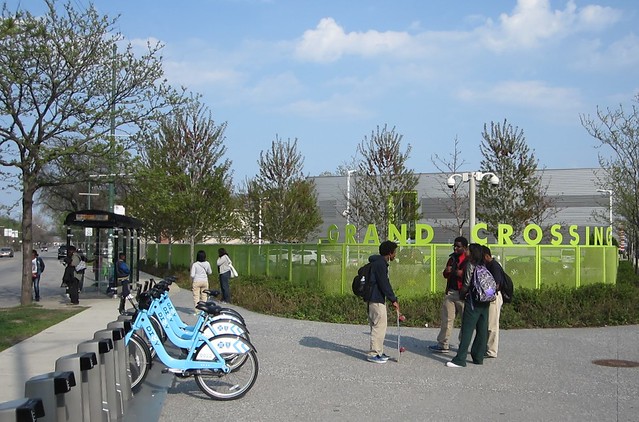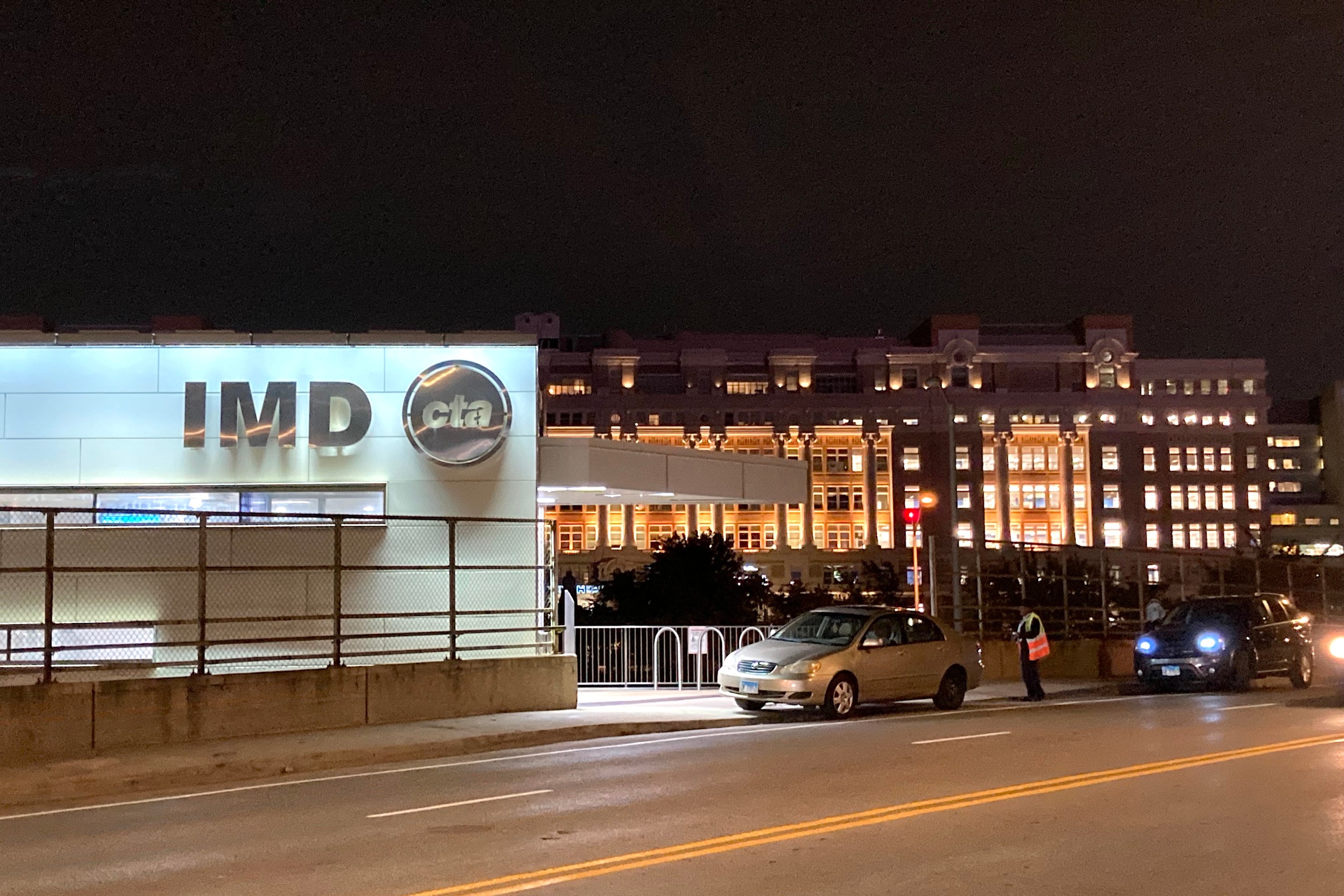Why a Viral Tweet Blaming Divvy for School Funding Problems Is Misguided
4:38 PM CDT on June 13, 2016
Things Chicago has money for:
•Rental bicycles•Dyeing the river green•A Ferris wheel
Things Chicago doesn't have money for:
•Education
— richie (@ohyoumeandaniel) June 2, 2016
Chicago residents have every right to be angry about the sorry state of the Chicago Public School funding. But don’t scapegoat the Divvy bike-share system, a bargain for local taxpayers that could have a positive effect on our city's wealth inequality problem.
The above tweet, implying that Divvy is a frivolous project paid for by money that should have been spent on schools, has been retweeted over 1,200 times this month. I understand the sentiment that the city invests too much money on downtown tourist attractions while neglecting the neighborhoods, but bike-share doesn’t belong on this list.
First of all, Divvy is a smart investment for the city. After the system, which launched in 2013, expands this summer, it will include almost 6,000 bikes and 584 docking stations and serve 37 of Chicago’s 50 wards, so it’s evolving into a citywide public transportation network.
The total cost for all of the city’s bike-share infrastructure, plus some of the wages for siting the stations, is $35,838,780, with 80 percent of the bill covered by federal and state transportation grants. (The suburbs of Evanston and Oak Park lined up their own funding for ten and 13 stations, respectively).
$36 million sounds like a lot of money but – like most bike enhancements -- it’s a drop in the bucket compared to car infrastructure costs. For example, the current work to expand Chicago’s Jayne Byrne (formerly Circle) Interchange is costing $475 million. That’s more than 13 times the price tag of the city’s entire bike-share network, for a project that many transportation experts say won't achieve its goal of reducing congestion.
Moreover, the federal and state grants that paid most of the cost of Divvy can only be used for transportation infrastructure. Chicago doesn’t have the option of spending that cash on schools.
OK, you might ask, but how about the 20-percent match the city had to provide – couldn’t that roughly $7.2 million have been spent on the CPS? Yes and no. According to the Chicago Department of Transportation, the local match was largely funded by ward “menu” money (which can also only be used for infrastructure), Divvy’s $12 million sponsorship deal with Blue Cross Blue Shield, and payments from real estate developers who purchased docking stations to go in front of their buildings.
However, it is true that some of the $7.2 million came from Chicago’s tax-increment financing program, which has been widely criticized because it diverts property tax revenue from schools, parks, and other taxing bodies. But if we’re going to have a TIF program at all, spending a few million to fund Divvy stations is in line with the original intent of the program: earmarking tax revenue from a designated district for investments that benefit residents of that district.
As for the expenses associated with running and maintaining the system, CDOT says operations costs are currently being covered by user fees and revenue from the ad panels on the stations.

But another valid question is, does Divvy truly benefit average Chicagoans, or is it really just geared towards visitors and wealthier residents who are willing and able to pay $9.95 for a 24-hour pass or $99 for an annual membership? It’s true that, in an effort to make the system financially sustainable, CDOT concentrated most of the first 300 stations in the city’s denser, more affluent areas, including downtown and the Near North Lakefront. That was a factor in why a user survey released last year found that, as with most U.S. bike-share systems, Divvy members are more likely to be white, wealthy, and well-educated than the city’s general population.
But recently CDOT has taken steps to make Divvy more accessible to residents of low-to-moderate-income communities of color, the neighborhoods that stand to gain the most from the mobility, health, and economic benefits of bike-share. Most of the 85 stations being installed in Chicago this year are going to predominantly African-American and Latino communities on the South and West sides such as Burnside, Chatham, Greater Grand Crossing, Brighton Park, Englewood, East Garfield Park, West Garfield Park and Austin.
Last July the transportation department launched the Divvy for Everyone initiative, which offers one-time $5 memberships to individuals making $35K or less, and waives the usual credit card requirement. Bike equity organizations like Go Bronzeville and Slow Roll Chicago have been helping to promote the program and over 1,300 people have signed up within the first year – almost twice as many as CDOT’s original target of 750.
Granted, a $5 Divvy membership doesn’t help you connect with job or educational opportunities if you don’t know how to ride a bike, or aren’t comfortable navigating city streets on two wheels. That’s why this year CDOT’s Bicycling Ambassadors are offering six weeks of free bike handling classes for adults. The one-time seminars, which will each last an hour or two, are only being offered on the South and West sides.
Again, Chicago’s bike-share network has a ways to go before it's a transportation system that serves all residents equitably, but it’s definitely moving in that direction. If you’re going to criticize the city government for having misplaced funding priorities, keep in mind that Divvy isn’t part of the problem – it’s part of the solution.
In addition to editing Streetsblog Chicago, John writes about transportation and other topics for additional local publications. A Chicagoan since 1989, he enjoys exploring the city on foot, bike, bus, and 'L' train.
Read More:
Stay in touch
Sign up for our free newsletter
More from Streetsblog Chicago
Today’s headlines for Tuesday, April 16
Curb your enthusiasm: Our FOIA request didn’t solve the Doty dilemma, but we got some interesting intel
We did find out that the old Doty/Woodlawn bike lane curb protection was relocated to CDOT projects that were installed at Broadway/Aldine and on Wrightwood.
TLC in the IMD: the Illinois Medical District Commission releases bike and pedestrian safety plan
Five proposed projects would improve walking and biking safety - and beautify - the IMD.



